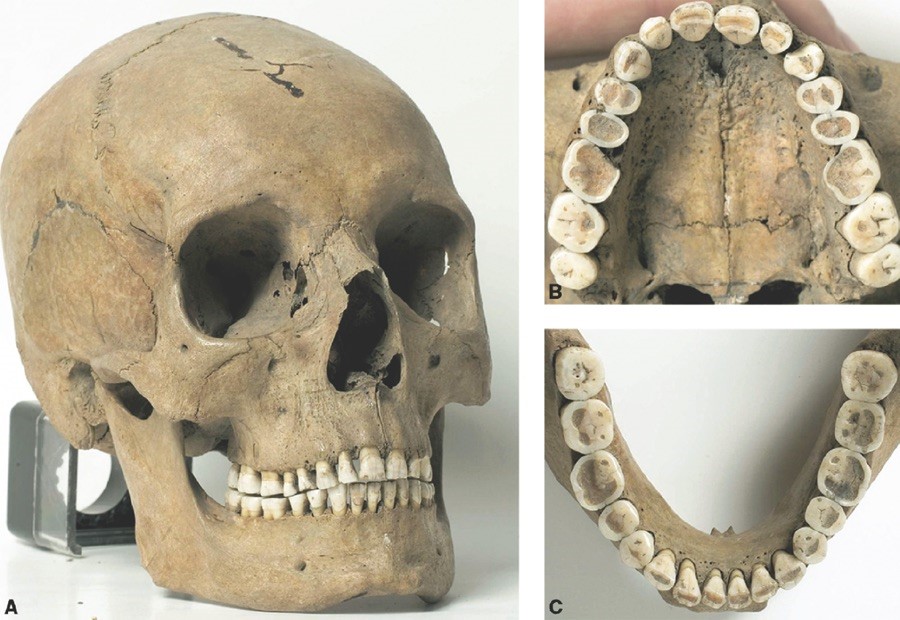There is a common misconception that modern humans are the pinnacle of evolution and therefore no longer subject to evolutionary forces like natural selection. This is not the case. While humans have the advantage of culture, we are still biological organisms. Does this mean modern humans are still evolving? Yes, and you can see the evidence right in your own mouth! Many of us have less than perfect teeth. We may have over- or under-bites, impacted wisdom teeth, or malocclusion (that’s a fancy way of saying misaligned and overcrowded teeth). We can now correct some of this using culture (thank you, modern dentists and orthodontists!) but how did this array of maladaptive dental conditions come about in the first place?

The dental conditions I have just described do not typically occur in forager/hunter gatherer populations at the high frequency we find them in agricultural populations. What’s going on here? With the adoption of agriculture during the Neolithic Transition around 12,000 years ago, our diets underwent a dramatic shift. During this time, we began to rely heavily on much softer and more processed foods more often than ever before in our history. We no longer had the varied diet of rough hard foods that our forager/hunter gatherer ancestors had. This harder diet would have worn teeth down throughout our adolescence, allowing for stronger jaws and an edge-to-edge bite to develop in adulthood. As diets became softer with the Neolithic Transition, teeth were no longer worn down and jaws gradually became more gracile over time in response. Bone tends to be more reactive to environmental pressures than teeth are, resulting in teeth that are essentially too big for our jaws.
The image above shows a side by side comparison of the jaws and teeth of an ancient forager female from Romania (left) and a Bronze Age male agriculturalist from Austria (right) in profile. Notice that the agriculturalist (right) has a more gracile jaw and a bit of an over-bite. The forager woman (left) has what is known as an edge-to-edge bite where the upper and lower teeth align.

The image above shows a skull (left) and a view of the upper and lower teeth of a forager (right). Note how they are nearly perfectly aligned, and all three molars are fully erupted, including the wisdom teeth. The third molar furthest back in the jaw is more commonly called the ‘wisdom tooth’, named this because it is the last tooth to erupt (if there’s enough room to do so) in the jaw at around 18 years of age. The occlusal (chewing) surfaces also show a degree of wear from a diet of hard and gritty foods.

For comparison, the image above shows the lower jaw of an agriculturalist. Note the thinner bone structure, the malocclusion of the front teeth, and the overcrowding of the molars. When there’s not enough room in the jaw, erupting molars can become impacted, which is incredibly painful and can result in infection and even death. In the not-so-distant past this would have been potentially devastating. A mutation resulting in a lack of wisdom teeth would therefore provide a selective advantage, increasing the fitness of those individuals without wisdom teeth and thus increasing the frequency of the mutation for no wisdom teeth in populations. Given enough time, this mutation could have become widespread. However, now that wisdom teeth can be extracted by modern dentists, there is no selective advantage to not having them. In fact, the frequency of wisdom teeth may even increase in the future.
Is evolution accelerating? Yes! Culture doesn’t slow down evolution; it actually accelerates it. Population size increased dramatically with the Neolithic Transition and continues to increase every year. The more humans there are, the more chance of mutations occurring. Mutation increases variation, and high levels of variation fuel more rapid evolutionary changes in populations. Modern medical advances also generate diversity. Individuals who in the past would not have survived now have a better chance of surviving and reproducing. Human evolution has been and continues to be shaped by both biological and cultural factors.
To quote Sang-Hee Lee, “As biological organisms, we cannot escape the forces and mechanisms of evolution. Humans evolve. But at the same time, humans are unique in that they can influence their own evolutionary trajectory through self-made culture and civilization.” We are still evolving, often in unpredictable ways. We cannot yet know the impacts of new emerging and reemerging disease environments, pollution, climate change, mass extinctions, medical advances, new technologies, etc. but certainly there will be changes. Change is a constant.
Kate Keller (McElvaney)
References:
https://www.sup.org/books/extra/?id=29626&i=Introduction.html
So interesting!! I look forward to reading many more!
Fascinating- love your writing style. Encore!